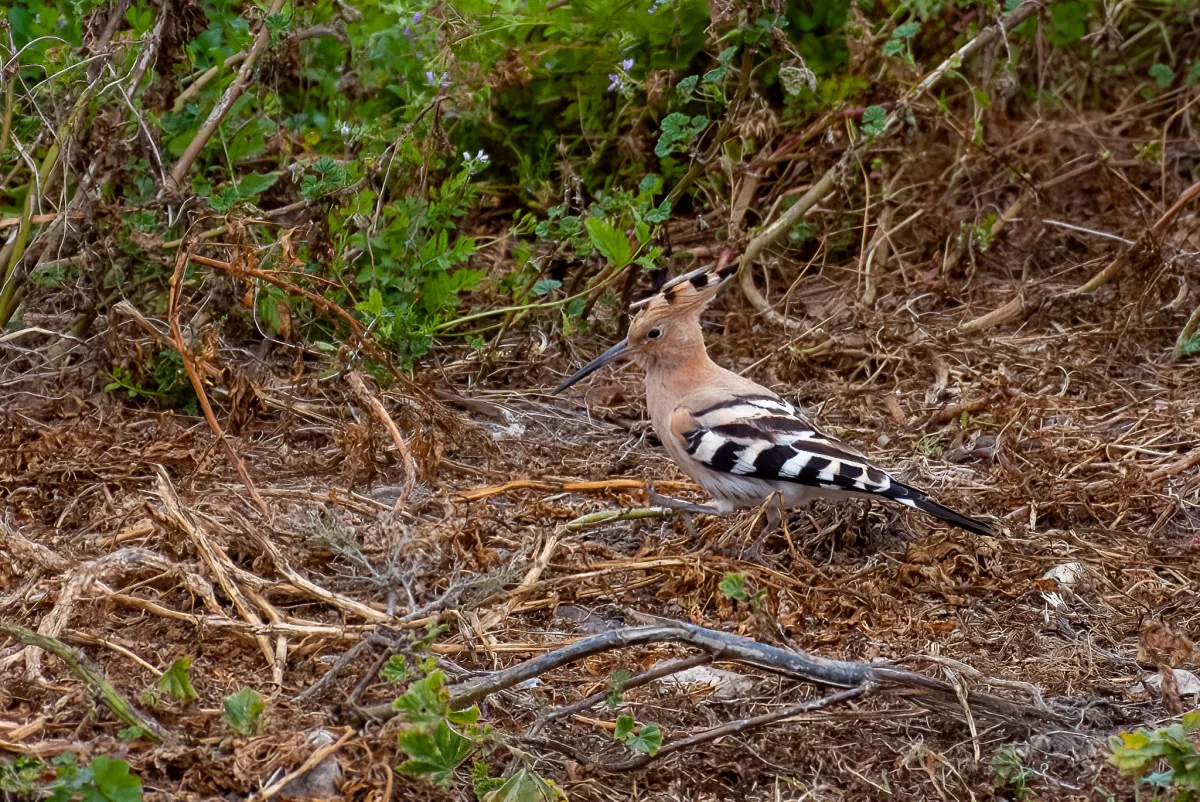Found throughout the diverse ecosystems of Europe, Asia, and North Africa, the Eurasian Hoopoe, Upupa epops, is known for its striking appearance and distinctive “oop oop oop” call.
They can be regularly seen in various areas of Nerja. Always wonderful just to stand and watch them as they forage for food.

Appearance
The Eurasian Hoopoe has a striking appearance that sets it apart from many other birds, its most notable feature probably being a crown of cinnamon-brown feathers that form a graceful crest atop its head. The rest of its plumage is a mix of soft hues, with pinkish-brown on the body, black and white stripes on the wings and tail, and a long, slender, and gently curved bill.
It is a medium-sized bird, 25–32 cm (9.8–12.6 in) long, with a 44–48 cm (17–19 in) wingspan. It weighs between 46 and 89 grams (1.6–3.1 oz). The Hoopoe has a long, thin tapering bill that is black with a fawn base.
Habitat and Range
Eurasian Hoopoes are highly adaptable and can be found in a wide range of habitats, including woodlands, savannas, grasslands, and even urban areas. They are known for their nomadic tendencies, with some populations migrating to warmer regions during the harsh winter months. Their extensive range spans from Western Europe through Asia, and they can be spotted as far east as Japan and as far west as the British Isles.
Behaviour and Diet
One of the most captivating aspects of the Eurasian Hoopoe is its foraging behavior. These birds have a distinct way of searching for food. They probe the ground with their long, slender bills, often using a series of quick, rhythmic thrusts, to uncover insects, larvae, and other small invertebrates. Their diet primarily consists of insects, making them essential for pest control in their ecosystems.

Breeding and Nesting
During the breeding season, Eurasian Hoopoes become even more intriguing. They are cavity nesters, often choosing holes in trees, cliffs, or even buildings for their nests. The female lays a clutch of eggs, typically ranging from 5 to 7, and incubates them for about two weeks. Once hatched, both parents share the responsibility of feeding the chicks. Interestingly, if disturbed at the nest, hoopoes have a defense mechanism where they can squirt foul-smelling secretions from a gland near their tail, deterring potential threats.
Cultural Significance
The Eurasian Hoopoe has not only captivated the scientific community but has also left an indelible mark on culture and folklore. In many cultures, it is considered a symbol of good luck and protection. Its unique appearance and distinctive call have inspired numerous myths and legends throughout history.
The hoopoe was chosen as the national bird of the State of Israel in May 2008 in conjunction with the country’s 60th anniversary, following a national survey of 155,000 citizens, outpolling the white-spectacled bulbul. It was declared the national bird of the State of Israel on 29 May 2008 by President Shimon Peres.
Conservation Status
While the Eurasian Hoopoe is not currently considered globally threatened, it faces local challenges due to habitat loss and degradation. Efforts to conserve and protect the habitats where these birds reside are essential to ensure their continued presence in the wild.